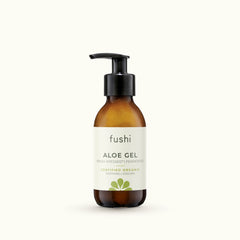Aloe Vera Gel vs. Aloe Vera Juice: What's the difference?
Aloe vera, popularly known as a "wonder plant," has been the center of skincare and health remedy for centuries. It is well known for its soothing, moisturising, and healing abilities, and for these reasons aloe vera is an excellent ingredient that is utilised in a multitude of products, from skincare to beverages. Although aloe vera gel is quite popular for its external uses, soothing sunburns and moisturising skin, aloe vera juice is gaining popularity for its internal health use.
The distinction between the juice and the gel of aloe vera is frequently confused. Aloe vera gel refers to the transparent jelly-like substance found in the inner portion of the aloe leaf and applied externally. Aloe vera juice, however, is made from the outer leaf and sap of the plant, processed and filtered and consumed internally. This nutritious juice is well known for its potential digestive advantages, immune system advantages, and overall well-being, and thus is well worth being a part of a healthy wellness program.
Aloe Vera Gel
Aloe vera gel, taken from the innermost portion of the aloe leaf, is thick and gel-like in texture, making it a favourite ingredient in skin care. With a constituent of about 99% water, the gel is extremely moisturising and revitalising. Its other 1% is full of active substances, such as polysaccharides, vitamins (A, C, E, and B12), minerals, enzymes, amino acids, and antioxidants.
Together, these ingredients synergistically create many benefits for the skin. Polysaccharides retain moisture, leaving the skin hydrated and repairing itself. Vitamins and antioxidants shield the skin against damage caused by the environment, aid skin regeneration, and prevent inflammation. Aloe vera gel is often applied to sunburned skin because it is cooling and causes injured skin to heal faster. It is also a great moisturiser that seeps deeply into the skin to hydrate without the greasiness.
Aloe Vera Juice
Aloe vera juice is a liquid form of the plant extract, differing from the gel in its higher water content and, sometimes, additional processing. Aloe vera juice, in contrast to the jelly-like, syrupy consistency of aloe vera gel, is more fluid and thus is suitable for consumption. Aloe vera juice has a higher concentration of water and may contain added ingredients like citric acid or preservatives for better shelf life and flavor.
Aloe vera juice has vitamins, minerals, enzymes, and amino acids, the same as the gel but in a form that is appropriate for internal use. Its primary health benefits are all centred around digestive health, as it acts to soothe the digestive tract, alleviate constipation, and encourage overall gut health. Aloe vera juice also hydrates and can boost the immune system with its antioxidant properties. Drinking aloe vera juice on a regular basis can enhance detoxification, nutrient absorption, and general well-being and is a useful adjunct to an overall health regime.
How are they extracted?
Aloe vera gel is extracted by cutting open carefully the inner core of the aloe leaf to extract the clear pulp. The gel is typically filtered and purified to remove any leftover latex or impurities.
Aloe vera juice, alternatively, is typically extracted by grinding the whole aloe leaf, including the gel and leaf skin. But top quality Aloe Vera juice would be juiced only from the inner leaf, not the outer. The material is filtered to extract the liquid from the solid material and dilute the bitterness. This method enables the juice to keep its beneficial compounds while preparing it for ingestion.
Key Differences between Aloe Vera Gel and Aloe Vera Juice
Aloe vera juice and aloe vera gel differ in texture, use, and concentration of active compounds. Aloe vera gel is a thick, viscous liquid extracted from the inner leaf pulp and is utilised primarily for topical use. It is particularly good at moisturising, sunburn relief, and skin healing due to its high content of polysaccharides, vitamins, and antioxidants. Its dense, gel-like consistency is ideal as a topical application.
Conversely, aloe vera juice is a liquid extract derived from squeezing the entire leaf and straining out solids. It is meant for internal use, providing such benefits as digestive aid, hydration, and immune system enhancement. Both contain necessary nutrients, but aloe vera juice contains more water and may have additives in the form of flavour and preservatives, whereas the gel has a more concentrated amount of active ingredients for topical application to the skin.
Choosing between Aloe Vera Gel and Aloe Vera Juice
When deciding between aloe vera gel and aloe vera juice, consider your intended use and personal preferences. Aloe vera gel is ideal for external applications, such as soothing sunburns, moisturising skin, and treating minor wounds. Its thick consistency allows for direct application and targeted skin benefits. Aloe vera juice, on the other hand, is suited for internal use, providing digestive support, hydration, and immune system benefits.
Convenience also plays a role; gel is easy to apply directly to the skin, while juice is straightforward to consume. Safety considerations are crucial—both forms can cause allergic reactions or sensitivities in some individuals. Always perform a patch test for gel and consult with your doctor or healthcare provider before starting a new juice regimen.
For high-quality products, select those with minimal additives and preservatives. Look for certifications of purity and sourcing, and choose products that specify the concentration of aloe vera to ensure you are getting the most effective and natural benefits.



